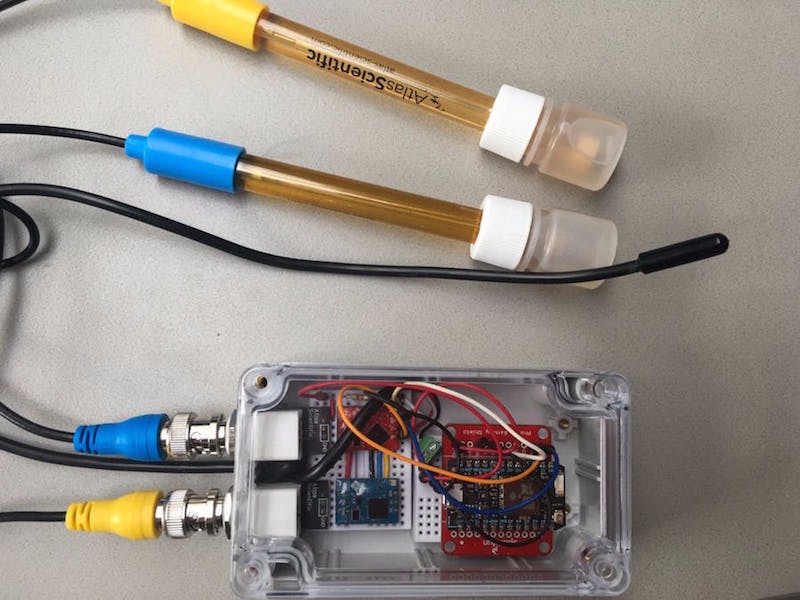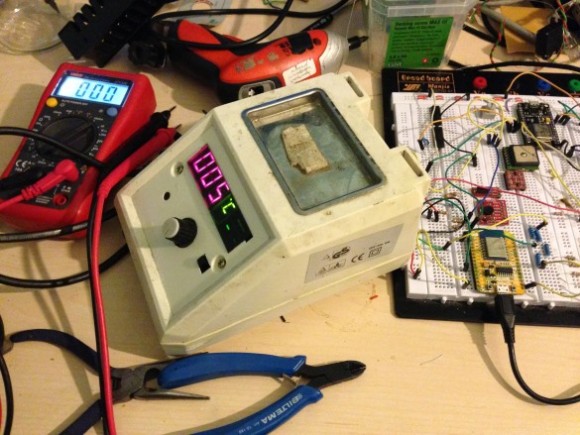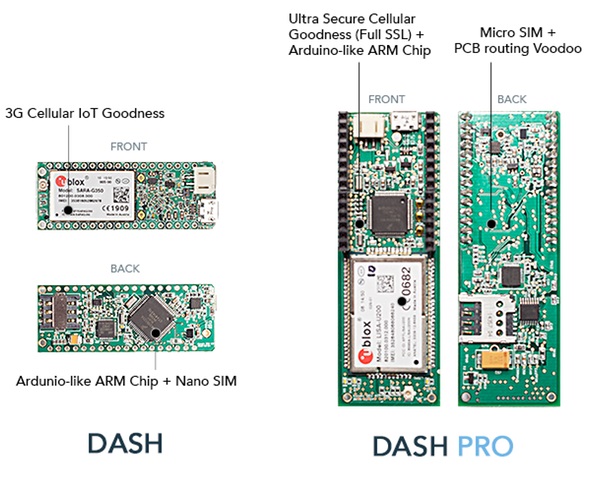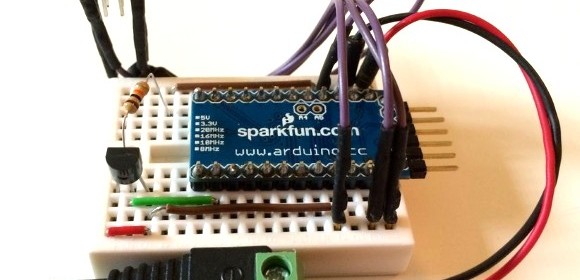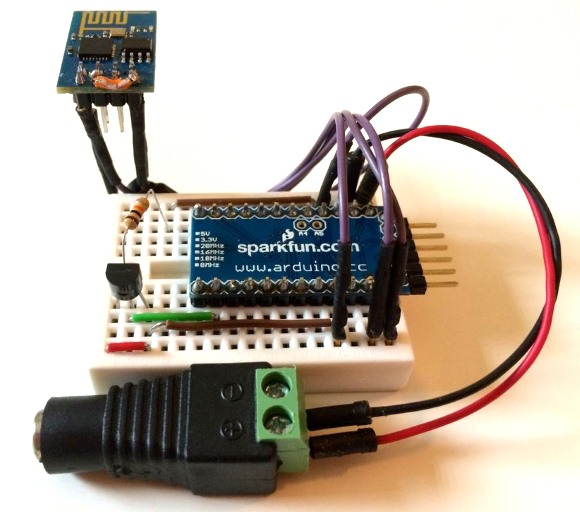Water quality monitor for your pool
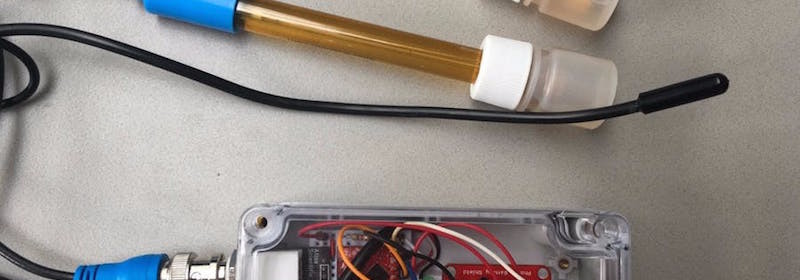
Are you tired of checking the pH level and chlorine concentration of water in your swimming pool everyday? This Pool Buddy project from Johan Brichau might be helpful for you to monitor the water quality automatically. It will also upload the data online continuously so that you can easily access it from anywhere. It uses the Ph and ORP kits by atlas-scientific.com for sensing the water quality and the Particle Photon for collecting the sensor data and sending them to an online database over the WiFi connection. A small solar panel is also mounted to keep the device running autonomously.
The Photon firmware boots the device every 5 minutes and takes a series of measurements during one minute: pH, ORP, temperature, battery charge and WiFi strength. The average of each measurement is sent as an event to the Particle cloud where an integration made by Particle takes care of forwarding those events to the Google pub/sub service. On the Google cloud platform, I have a cloud function that stores the value in a datastore.
